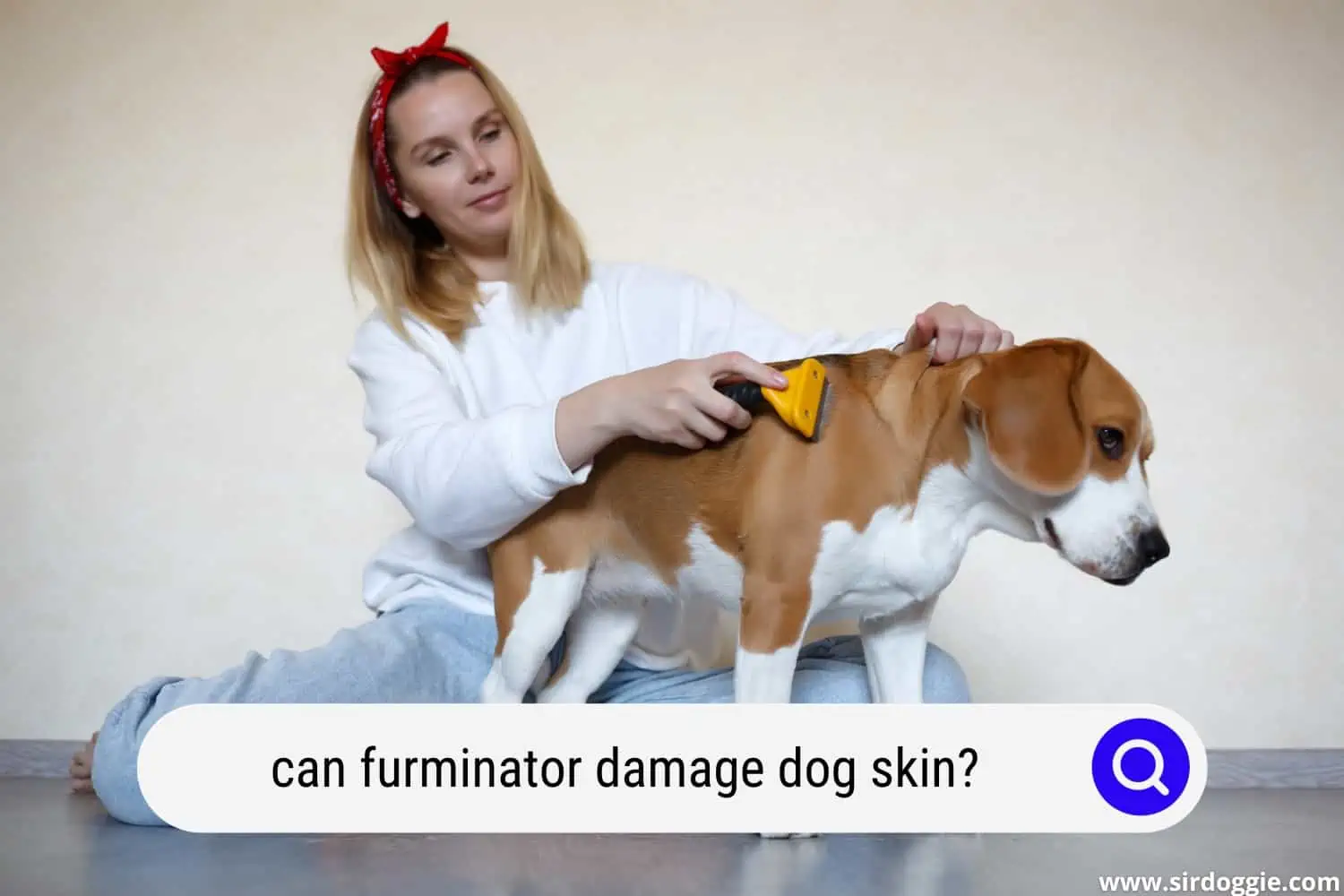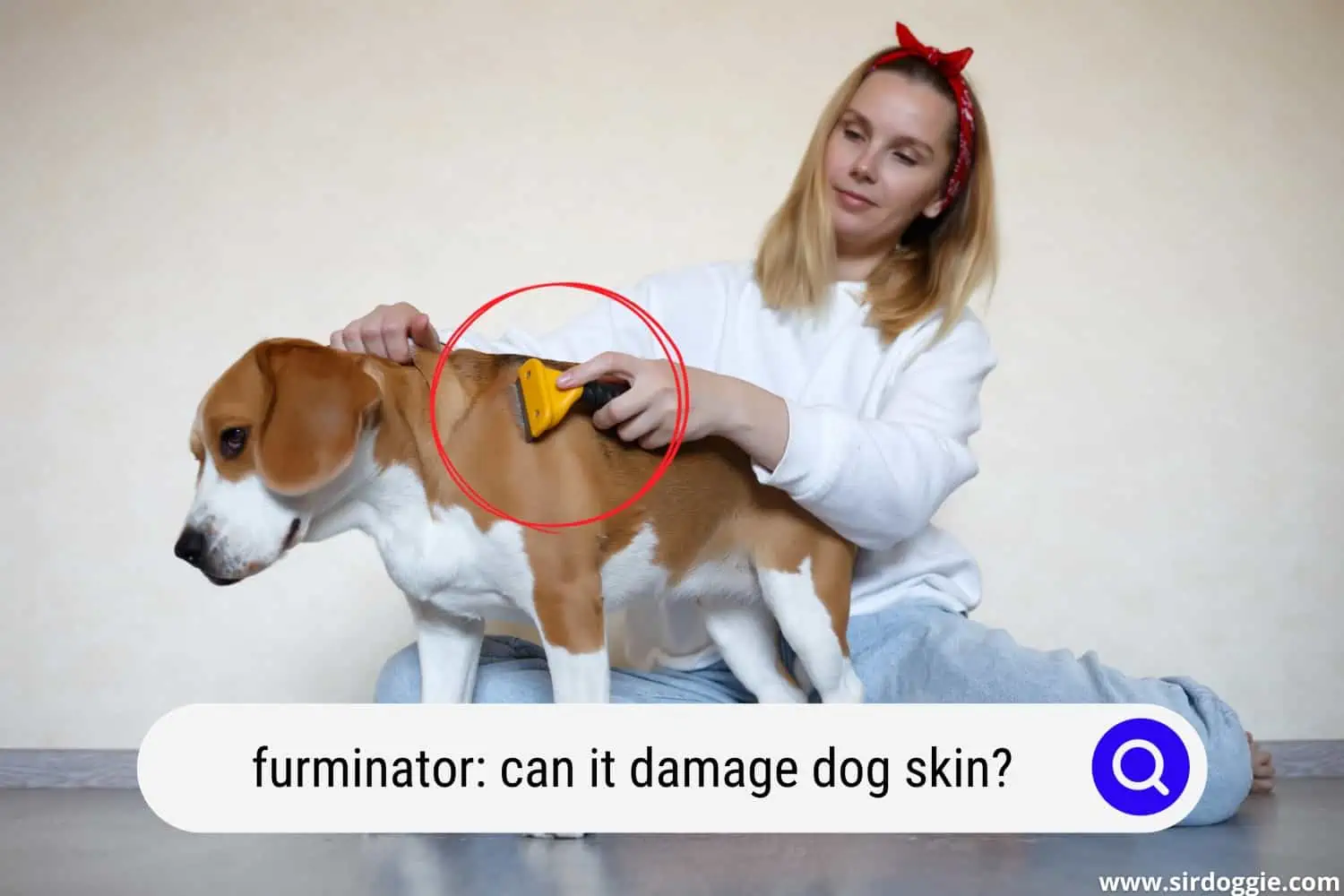Can Furminator Damage Dog Skin?
If you have a dog with a lot of hair and that sheds a lot, you may want to consider utilizing Furminator de-shedding tools to help shed your dog and remove some of that hair without causing a mess.
These de-shedding devices are a source of debate among pet owners. Some individuals believe that these tools damage a dog’s coat, but others believe that they are completely safe.
We researched the matter and spoke with dog owners and veterinarians in local communities to gain their opinions as well as feedback regarding their firsthand experience with Furminator de-shedding tools. Here is what we came across during our research.

Will Furminator Deshedding Tools Ruin Your Dog’s Coat?
Possibly. If they are not used with caution, they may potentially cause harm to your dog’s coat, especially if you use a de-shedding tool on your dog too frequently or too aggressively.
Dog owners all agree that they are fantastic tools when a dog is fully grown and has both of its coats fully in. However, using it on a young dog or puppy is not recommended since it has the potential to damage their coat while they are still developing.
Furminator de-shedding tools can cause harm to a dog’s coat if they are used incorrectly. They can cause the dog’s skin to become inflamed to the point of bleeding. The de-shedding tools produced by Furminator are stripping instruments that remove extra fur by cutting it with a blade. They work best when combed through your dog’s coat with a gentle touch. However, most of the time, these tools do not cause damage to coats.
Here are some of the things you need to be cautious about while using a Furminator de-shedding tool on your dog:
- Brush in the same direction as their fur.
- Avoid digging into the coat too deeply. The blades can cause significant pain and injury to the flesh below.
- Do not use de-shedding tools on wet skin or wet coats.
- Do not apply too much pressure.
Furminator deshedders are effective because they penetrate the undercoat of a dog’s coat, which is the portion of the coat that sheds heavily throughout the summer months.
How Frequently Can You Use a Furminator Deshedding Tool on Your Dog?
We recommend using a Furminator de-shedding tool just two times per week for 15-20 minutes each session for best results. During very severe shedding seasons, you may find yourself using these tools more regularly. Before using them, however, it is recommended that you read through the instructions completely. Your dog’s coat should be clear of any matting and knots as well.
How Do the Furminator Deshedding Tools Operate?
With the de-shedding tools created by Furminator, you can easily remove the undercoat and loose hair from your dog without cutting or harming its topcoat. While shedding is a normal process that your dog goes through, and it is not feasible to stop it, these de-shedding tools are meant to drastically minimize the amount of shedding that you have to deal with in your house. They are not intended to replace your dog’s natural shedding process, however.
The direction of your dog’s hair growth should be followed carefully when brushing their fur—this growth pattern is generally one direction from the base of the neck, ending at the tail. As you brush, these tools help you to eliminate the undercoat and loose hair from the surface of the coat.
Usually, most Furminator de-shedding tools are non-abrasive against your dog’s skin since they “vacuum” and shear away the loose hair and undercoat.
It is critical to use them systematically across your pet’s entire body, avoiding staying in one region for a prolonged period. Using one of these deshedders on the ears and tail is perfectly okay as well.
When it comes to most pets, the ears and tail are generally very sensitive areas; therefore, additional attention should be exercised when de-shedding these areas. Because the ears and tail are also quite prone to being matted, we recommend that you check and remove any mats and tangles before using any de-shedding tools on your dog in these areas.
Which Breeds Should Avoid Having Any Furminator Deshedding Tools Used on Them?
If you have any doubts about whether or not you should use a de-shedding tool on your dog, keep in mind that this tool should not be used on non-shedding breeds, sensitive skin breeds, most double-coated Northern breeds (such as Golden Retrievers, German Shepherds, Siberian Huskies, Alaskan Malamutes, etc.), and breeds that are prone to follicle damage (such as Pomeranians).
If you are unclear about whether your pet has an undercoat or not, you should seek advice from a veterinarian before trying to use any of these tools.
Some breeds that you should never use a deshedder on include the following:
- Dandie Dinmont
- Bichon Frise
- Bedlington Terrier
- Kerry Blue Terrier
- Chinese Crested
- Poodle
- Coton de Tulear
- Bolognese
- Puli
- Curly-Coated Retriever
- Portuguese Water Dog
- Glen of Imaal Terrier
- American Water Spaniel
- Irish Water Spaniel
- Komondor
- Maltese
- Lowchen
- Havanese
- Soft-Coated Wheaten Terrier
This is not a comprehensive list of the breeds that are unsuited for deshedding practices, but rather a selection of the most frequent.

Conclusion
When used appropriately, a Furminator de-shedding tool may be an excellent tool for dealing with the annoyance of all of the shed hair that your dog leaves around the house, in your car, and elsewhere. If you follow the directions, use it on an appropriate shedding breed, and don’t use it too often, these deshedders will not harm your dog’s coat.

Family Dog Expert Author
Hi there! I’m Stuart, a devoted dog lover and family dog expert with over a decade of experience working with our furry companions. My passion for dogs drives me to share my knowledge and expertise, helping families build strong, loving bonds with their four-legged friends. When I’m not writing for SirDoggie, you’ll find me hiking, playing with my beautiful dog, or studying music.